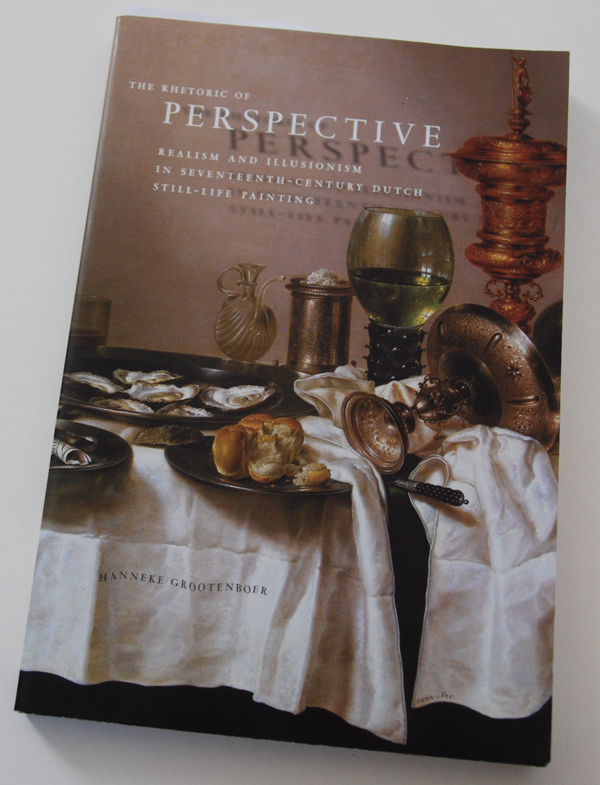Rhetoric of Perspective by Hanneke Grootenboer
The Rhetoric of Perspective
Okay, this book is a Ph.D. doctoral dissertation turned into a book, so it is pretty meaty and is the authors narrow analysis of her dissertation thesis. As difficult as certain passages can be, I loved this book, because is reinforced my personal opinion of why still life is such an amazing genre of art, that is, still-life paintings are human thought in painting form.
In Hanneke Grootenboer’s own words, here is a summation of what this book is all about, and how she plans to research and confirm her hypothesizes…
My hypothesis is that painting is a kind of thinking, and that perspective serves as a hretorice of the image. I suggest that perspective is a model of thought as much as a system of persuasion. The rhetorice of perspective convinces us of that which painting shows, while it provides a method for that which painting “thinks”. (pg. 10)
Perspective does not possess a lexicon that determines the relation between sign and meaning, as iconography does, but it partly structures and naturalizes the presence of pictorial elements in relation to their meanins. (pg. 12)
I will argue in this study that, like rhetoric, perspective is an allegorical form; in other words, it is an allegory of truth in painting. (pg. 13)
Over and over the author asserts that a still-life painting is a visual representation of thinking…
I believe that what still lifes communicate is not a story, but a theory, that is, a form of thinking in visual terms. (pg. 25)
This study intends to demonstrate how the deployment of perspective in still-life painting points to a truth in painting that falls beyond the picture’s frame, and perhaps even beyond our perception – in the narrow sense of the word. This truth in painting, I believe, cannot be found by employing interpretive methods that search for meaning, but instead calls for a different mode of looking. The still life anticipates such a mode of looking by raising issues concerning the nature of its own representation, which do not lead us, as viewers, to interpretation but to a state that is most thought-provoking, namely, thinking. (pg. 19)
I love that another person seems to have the same opinion as I do about the importance of still life as an expression of human thought and understanding. And she used some wonderful still-life paintings to support her arguments.
So if you enjoy theoretical discussions on the importance of art and the genres within, I think you will enjoy this book as well. And as an added benefit, you will learn a lot more about the great still-life paintings of Western history…





